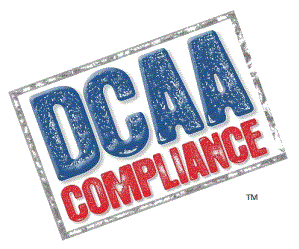“DCAA auditors are awarded professional judgement by an Act of Congress”
Surviving a DCAA Audit
Of course on a practical level, my opinions mean very little. Contractors and consultants try to accommodate DCAA and their inadequacy as much as possible. I personally construct incurred cost submissions that, on the surface, appear to look like the Model ICE. I send the submissions in Microsoft Excel but I remove all of the links and formulas (This last step I finally took a couple of years ago after a DCAA Supervisor kept screwing up the links and demanding that we resubmit them ‘correctly’).
The Schedule I has always been the weak link in this approach because of the extensive design flaws and implementation issues I outlined in the previous articles. These flaws make this form, DCAA’s Models Schedule I, difficult for both DCAA and contractors to work with. There are the GAAP problems, the omission problems, and the certification problems that just run across the entire form.
I sit here and look at the Model Schedule I and ponder what lines, both literally and figuratively, I should draw in an effort to move this forward. The figurative line means it is perhaps time to complain to the DOD OIG about this matter, about violations of the Paperwork Reduction Act, and exceeding their regulatory authority.
The literal line is the following implementation of a revised Schedule I:
- I agree with DCAA’s restriction of the form to only those contracts with government participation. This means only those T&M contracts with variable indirect rates are included on the Schedule K and carried to the Schedule I.
- Only contracts with current year activity will be reported.
- The regulation specifically rejected the need for the contractor to submit at any level greater than contract level. Failure of the contractor to report more extensive detail beyond the contract level is a matter of audit not adequacy. The government is free to request this information as part of their audit.
- The disjointed and flawed division of the Schedule I into four parts is now formalized and defined:
- Part One – Cost Type Costs (entity Contractor)
- Part Two – Time and Material (T&M) contracts at bill rate and contractor’s variable costs
- Part Three– Government Costs as billed (to include Fee and any relevant taxes)
- Part Four – Reconciliation of cost to billing. A reconciliation of billing and costs is inferred in the regulation and thus poorly thought out by both DCAA and regulators. I discussed the reason in previous articles, but this illusionary reconciliation is the heart of the schedule. Inclusion of this meaningless data is an imposition on contractors, but there are a lot of those.
- As to specific format:
- “Unsettled/Claimed Direct And Indirect Costs Using Claimed: Prior Year Costs FYE” is simplified to “Remaining Prior Year Costs”.
- “Less Contract Limitations Rebates/Credits” is simplified to “Cost in Excess of Contracted Amounts”
- A Column for Fee is added under Government Costs
- Optional Columns are placed under Government Costs to include: “State or Local Tax Assessed on Contract”, “Contractor Costs Associated with Cost Sharing”.
I consider these minor changes but I am sure there will be too many DCAA auditors who will argue otherwise?
What are your thoughts?
